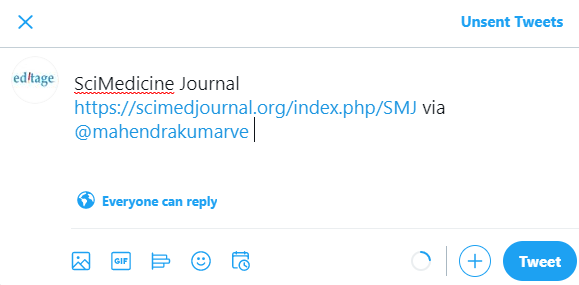Q: Could an invitation by SciMedicine Journal be considered authentic?
I uploaded my paper on medRxiv, and was soon invited by a journal named SciMedicine Journal based in Italy. When I searched for this journal on DOAJ, it is not identified as a predatory journal. However, I think there can’t be such a ‘sweet deal.’ What do you think?
We looked up SciMedicine Journal, putting it through the various checks on our predatory journal/publisher identifier checklist, and here’s what we think.
The journal seems legitimate on almost all key parameters: editorial team, indexing, parent publisher/group, and associations. Its publisher, Ital Publication, is the affiliated publication of the group European High-tech and Emerging Research Association (EUHERA). As it states on the Ital Publication page, and as verified, Ital Publication is a member of the UKSG, the UK’s largest scholarly communications community. You may check/look for it yourself on the UKSG Members list here.
There may be just one matter though. The social media icons for Euhera, located at the bottom of the group home page, don’t work. On clicking, they take you to the top of the page in a new window. In fact, none of the three entities – the journal, the publisher, and the group – seem to have even one social media page on any of the popular platforms. That is a bit odd, especially in today’s times, when everything seems to first appear on social media.
On the same lines, on clicking the Tweet icon at the bottom of the journal home page and logging in to Twitter, a window opens up, which while including the link of the journal also includes the handle of a person who doesn’t seem to be associated with the journal or with research or research publishing and is not identifiable on Twitter. When clicking the Facebook icon, we didn’t come across anything similar.

Now, the reason for the non-functionality of the icons could be because they used a template to build the site and haven’t removed items that are not being used. The case of the unidentifiable unconnected person could be that he is/was possibly a tech person involved in building the site. However, these are just speculations.
When searching for the journal on Google, ‘scimedicine journal predatory’ does appear as an auto-populate search term, but this could be because enough researchers have wanted to ascertain the legitimacy of the journal (as you have).
The question mark over the journal, based on our assessment, is probably due to the fact that it’s a new journal. It was launched in 2019, which means it is not even two years old, and therefore doesn’t have an impact factor (IF). For the same reason, only 10 issues have come out. Which is perhaps why it needs to reach out to researchers for their papers, making it seem like a predatory journal. It did call for papers for its very first issue, but given what we have just discussed, that’s probably understandable. Most interestingly and relevantly, the journal presently publishes articles absolutely free. Again, this could be because it’s new and is adopting these strategies to gain visibility. You may think of it like a new streaming platform offering free membership for the first 30 days or even a year.
Coming to the question you have probably had, should you submit to the journal? We would say this would have to be your call. This is of course because we aren’t privy to your research. But there are a couple of other considerations as well. You have said you uploaded your paper to medRxiv. Now, have you put up your paper only on medRxiv, with the aim to share a draft version, gain some feedback from other researchers, make changes, and then submit a more complete paper to a journal? Or have you also submitted to a journal along with uploading it to medRxiv? If the latter, you obviously can’t submit to this new journal (or any other journal) for now. If the former, again, it’s your call. You’ll probably want to submit to a more established journal. But on the other hand, you may also wish to keep your options open, in case for whatever reason, the paper doesn’t go through with an established journal.
Another way of deciding could be based on the fit between your paper and the journal. In the Focus and Scope section of the About page (About the Journal > Policies > Focus and Scope), the Aim and Scope of the journal is described as “publishing articles with a special focus on health in developing countries, which highlight the common problems of the region and their possible solutions.” If you believe this fits with the topic of your paper, and other points taken into account, you may consider the journal. On the flip side, this also offers you a gentle way to decline the invitation: in case your research is only about health in Japan (which is a developed country), your paper is obviously not relevant to this journal.
Hope that helps. For some of the aspects discussed above (checklist, challenges of new open access journals, and evolving tactics adopted by predatory journals), you may find it worthwhile to go through the following resources:
This content belongs to the Journal Selection Stage





